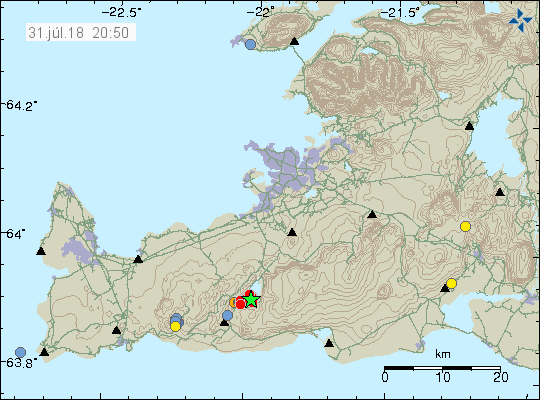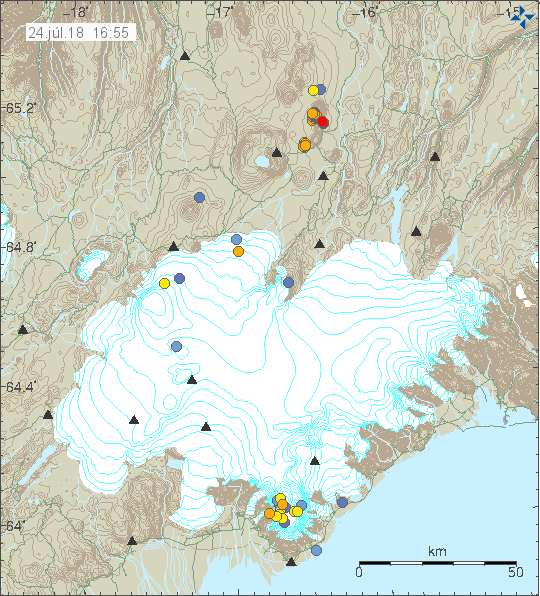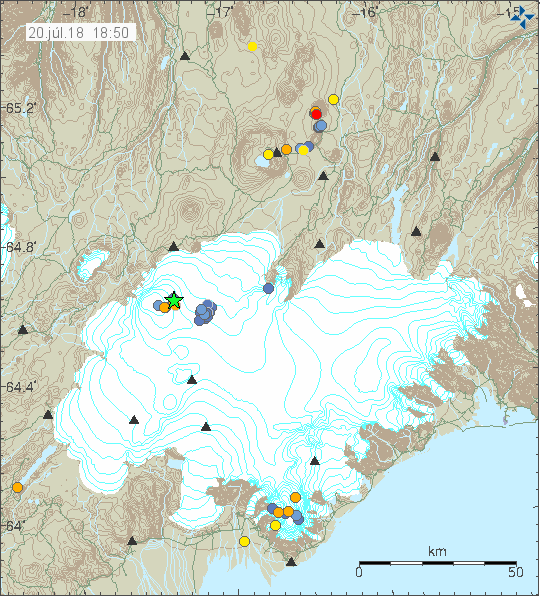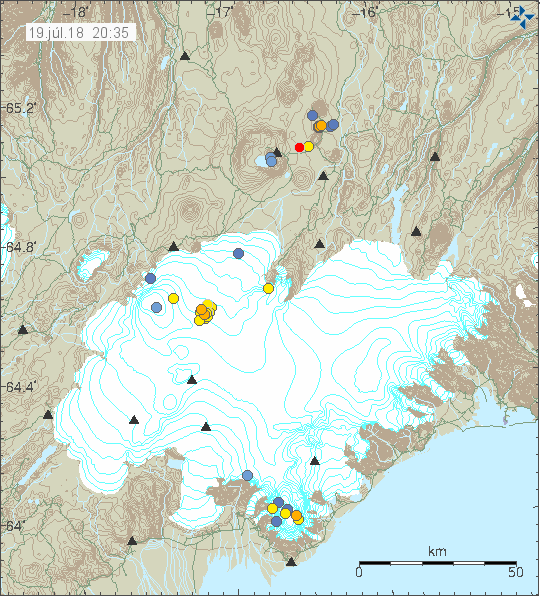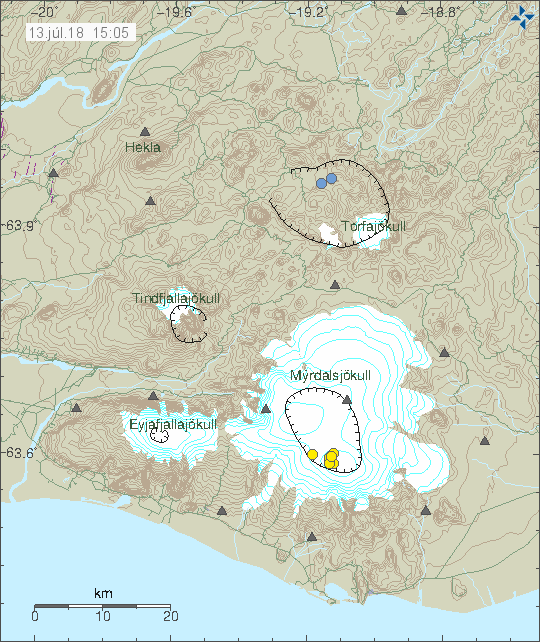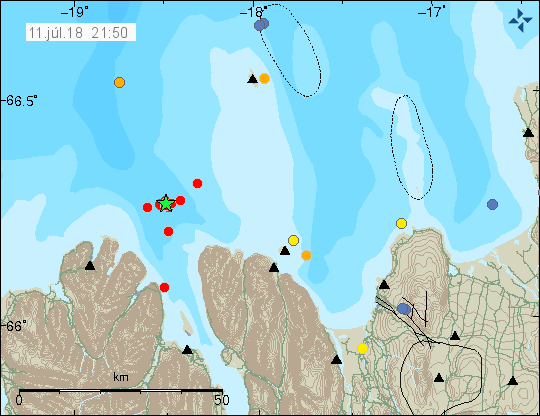A massive landslide has fallen in western Iceland from a mountain called Fagraskógarfjall. This landslide is estimated to be 2 km wide and 1,5 km long at earlier measurements. I don’t know yet much material did push forward in this landslide but the amount is considerable. This landslide blocked a nearby river and a small lake is currently forming. It is expected that the river is going to form a new pathway past this landslide in next few hours to days. This might be largest landslide or among the largest landslides in Iceland since the year 1000.
Images, maps and videos on Icelandic News media (all text and interviews are in Icelandic and no English text available)
„Með stærstu skriðuföllum eftir landnám“ (Rúv.is, video)
Stór grjótskriða stíflar Hítará (Rúv.is, image, audio interview in Icelandic)
Drónamyndir úr Hítardal (Rúv.is, video)
Breytir landslaginu í Hítardal (Rúv.is, image, embedded facebook video)
„Þetta er bein afleiðing af þessum miklu rigningum“ (Vísir.is, image, video)
Drónamyndband frá skriðunni í Hítárdal (Vísir.is, video)
Update 1
Ekki fyrirboði fyrir fleiri skriðum (Rúv.is, map)
Article updated at 19:11 UTC on 8-Juli-2018. Added new news item in Icelandic.
